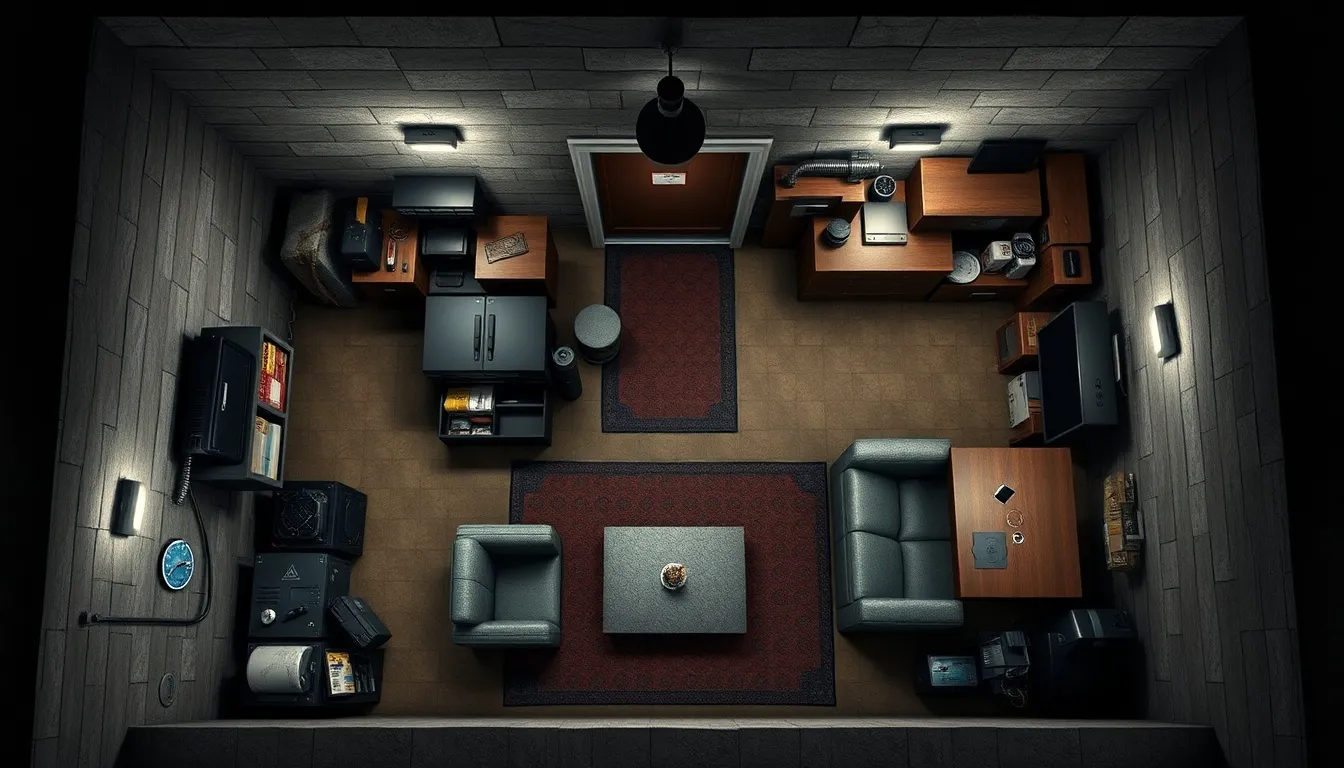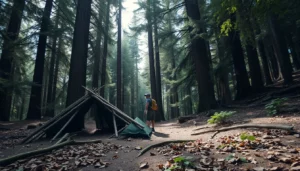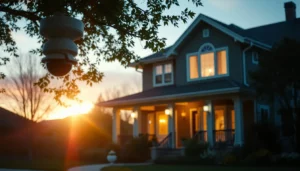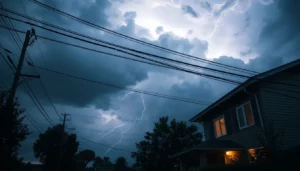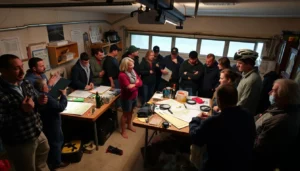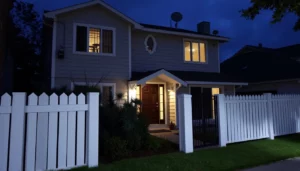In today’s blog post, we will show you how to build a safe room on a budget.
A solid safe room doesn’t require emptying your savings account.
Most contractors quote $20,000 or more for basic installations, but you can create an effective security space for a fraction of that cost.
This guide walks you through transforming an existing room into a protected shelter using affordable materials and practical security measures.
Ready to build your budget-friendly safe room? Let’s begin!

Protect your family and property in uncertain times!
Before we continue, let me introduce you to Guerilla Home Defense — the ultimate survival guide for navigating the uncertain times ahead.
Covering all three stages of the impending crisis in America, this guide equips you with the tools to protect your home from the surge in crimes like break-ins and attacks, handle the chaos of riots and looting, and even prepare for the potential of civil war.
If you’re serious about staying safe when disaster strikes, Guerilla Home Defense is a must-have resource.
How to Build a Safe Room on a Budget Quick Guide
- Convert an existing windowless space like a basement corner, walk-in closet, or interior room into your safe room to save costs.
- Reinforce walls with affordable materials from salvage yards and estate sales, including steel plates or concrete blocks.
- Install a solid-core door with multiple locking points, add basic ventilation using steel pipes and filters, and set up backup power and communication systems.
- Stock essential supplies like water (1 gallon per person daily), non-perishable food, first aid supplies, and emergency communication devices.
- While the average 8×8 safe room costs between $9,400-$13,100, you can significantly reduce expenses by doing the work yourself and sourcing discounted materials.
Understanding Safe Room Basics and Requirements
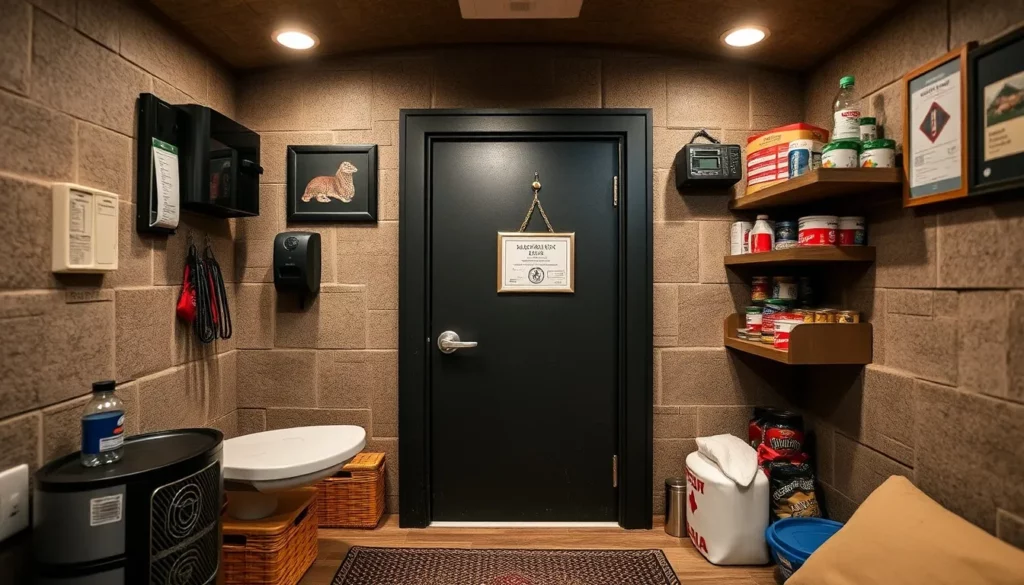
A safe room is a purposeful space designed to protect you and your loved ones when things go wrong.
Whether it’s a violent storm, a security threat, or another emergency, this space is designed to offer reliable protection for you and your loved ones.
To be effective, a safe room must meet specific standards tailored to the risks it’s built to counter.
Safe Room Structures
For instance, if the goal is to withstand extreme weather, the walls, roof, and doors need reinforcement to handle powerful winds and flying debris.
In cases where the threat is human intrusion, materials like steel or concrete ensure the room can resist forced entry and provide a secure barrier.
Proper Ventilation
Good airflow inside the safe room is as critical as its structural strength.
Without proper ventilation, staying inside for extended periods can become dangerous.
Specialized air filters and tightly controlled vents can keep fresh air circulating while maintaining the room’s security against outside contaminants or threats.
Accessibility
The location of a safe room can make all the difference in an emergency.
It needs to be easily accessible to everyone in the household, whether that’s a basement designed for storm sheltering or a reinforced space near the home’s core.
How Much Does a Safe Room Typically Cost

The cost of building a safe room can vary based on its size and the materials used, but you can expect to pay anywhere from $9,400 to $25,500.
For example, a standard 8×8 foot room may cost between $9,400 and $13,100, while a larger 14×14 foot room could range from $18,900 to $25,500.
If you’re adding a safe room to an existing home, you should budget for an additional 20% to cover the extra work involved.
Some states also offer rebates or financial incentives for those looking to install safe rooms, which can help offset the costs.
For maximum protection, it’s important to follow FEMA 361 guidelines, which are designed to ensure the highest level of safety during severe weather.
Always consult with professionals to ensure that your safe room is properly built and meets your specific needs.
7 Steps to Build Your Safe Room on a Budget
Family Bunker Plans
In this section, we will show you how to design and create a secure space that fits your needs and budget in 7 steps.
From selecting the right location to incorporating discreet features, we’ll cover the steps to make your home safer, without unnecessary complexity.
Let’s get started:
Step #1: Choosing the Ideal Location for Your Safe Room
For maximum protection during severe weather or a home intrusion, you should aim to place your safe room in an interior space.
Basements are ideal, especially for protecting against tornadoes and hurricanes, as they offer structural strength and distance from the elements.
If your home doesn’t have a basement, consider a first-floor room with no windows, which minimizes the risks from flying debris or glass shattering during a storm.
For those with limited space, a garage can work well, as long as you can create a path that’s quick and easy to access from the main living areas.
The path leading to your safe room should be discreet and hidden from view to avoid making it a target.
Using existing solid walls in your home can be an effective way to minimize costs while still providing a secure space.
Step #2: Reinforcing Walls and Ceiling
When constructing a safe room, the strength of the walls and ceiling is non-negotiable. These elements must be reinforced to withstand external threats like extreme weather or forced entry.
For the most robust protection, solid concrete or steel sheathing is a reliable choice.
However, if you’re working with a tighter budget, ballistic panels offer a cost-effective alternative. They still provide a high level of security while allowing wireless signals to pass through, so you won’t lose connection during an emergency.
Using impact-resistant materials is a must to ensure the room can endure heavy winds and flying debris.
The safe room should be isolated from the rest of the house, meaning the walls should not be shared with other rooms. This separation helps the safe room maintain its integrity if the rest of the house is compromised.
Additionally, it’s crucial that the walls and ceiling are properly joined together to prevent gaps, which could reduce the room’s wind resistance.
Step #3: Door Selection and Installation Guidelines
The door is one of the most important elements of your safe room’s security. It must be sturdy and reliable.
Opt for a reinforced door made of solid wood or metal — hollow core doors are not strong enough to provide the protection you need.
Adding a steel door frame will further strengthen the structure, making it more resistant to forced entry.
It’s crucial that the door swings inward. This design prevents debris or other obstructions from blocking your exit if an emergency arises.
For added security, consider a multi-point locking system, which locks the door at several points, making it much harder for intruders to break in.
Ensure that the door is installed with precision.
Take accurate measurements and anchor it securely to the surrounding wall to match the strength of the room’s walls and ceiling.
Window Considerations and Alternatives
Windows can compromise the security of a safe room, so it’s best to avoid them if possible.
If you must have windows, opt for smaller, high-placed ones made of strong materials like bulletproof glass or Plexiglas.
Bulletproof glass provides top-tier protection against potential threats, far surpassing regular glass in strength.
For existing windows, you can apply security film, which strengthens the glass and makes it more difficult to break. While it offers some protection, it’s not as effective as installing specialized security windows.
If you’re building a new safe room, consider eliminating windows altogether and using bullet-resistant “picture windows” that don’t open. These let in natural light while offering solid protection.
The Ultimate Guide to Preparing Your Home for a Sudden EMP Attack on the Grid!
Step #4: Installing Ventilation and Air Filtration Systems
Proper ventilation is critical in a safe room, especially if you plan to stay there for an extended period.
Without a reliable air flow, the space can become uncomfortable and even dangerous.
Installing MERV-rated filters can help maintain clean air by filtering out harmful particles from the outside. These filters are effective in ensuring the air remains fresh and breathable.
The size of your safe room will determine the complexity of the ventilation system you need.
Smaller rooms may only require a basic fan to circulate air. However, larger rooms or those that might be used for longer durations require more advanced systems to ensure that air quality remains high.
It’s also wise to prepare for power outages.
In case the electricity goes out, manual options like hand-cranked fans can keep the air circulating.
If you’re concerned about chemical threats or contaminants, consider investing in more advanced air filtration systems, which may use activated carbon to filter out dangerous particles.
Ensuring the air is clean and safe is as important as securing the walls and door, as it directly affects your health and well-being in an emergency.
Step #5: Installing Communication and Power Systems
To stay in touch during an emergency, consider a landline phone, or if that’s not feasible, a cell phone with a signal booster to strengthen weak connections.
Many people also opt for a 911-only phone, which allows for immediate calls to emergency services if needed.
It’s also a good idea to have a battery-powered or hand-crank radio available to receive weather updates or other critical information.
When it comes to power, you need backup solutions that ensure your safe room stays functional.
A generator or a battery-powered system will provide energy to keep essential devices running during an outage.
For energy efficiency, use long-lasting LED lights and make sure you have portable chargers on hand.
Setting up convenient outlets and charging stations ensures that everyone can keep their devices powered when needed.
Step #6: Stockpiling Emergency Supplies
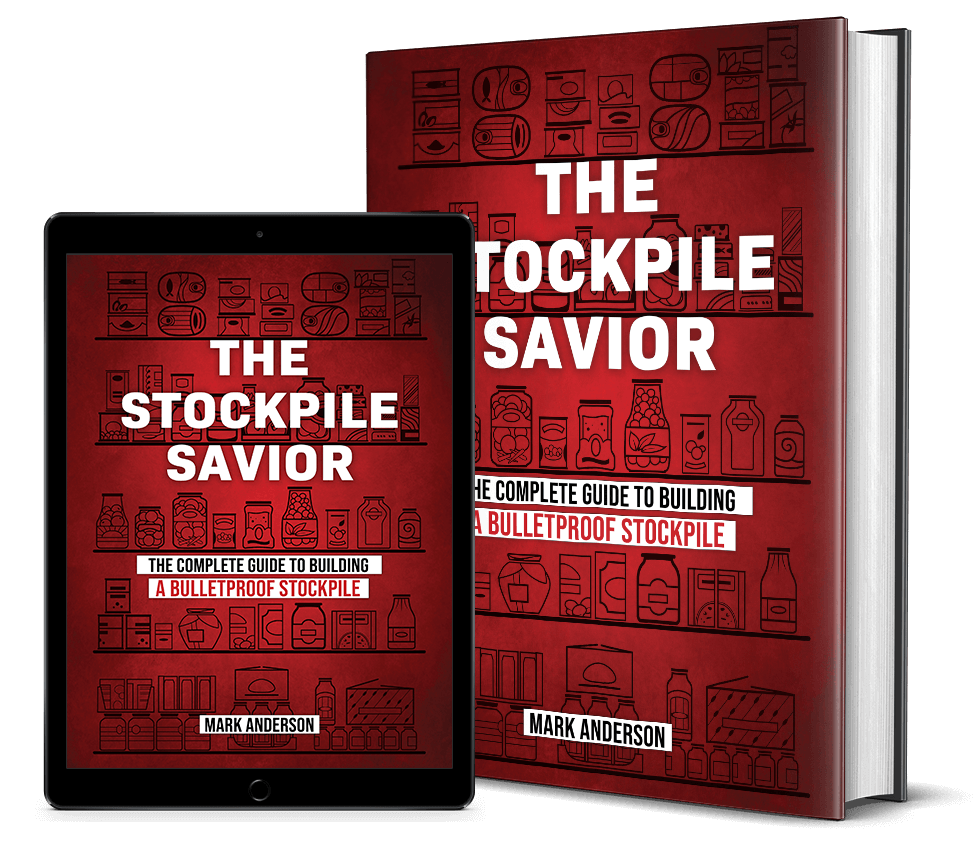
Discover how to build a 100+ days stockpile from scratch, in under 10 days!
This is the ultimate guide to building a bulletproof stockpile that takes you from being uncertain about your preps to being 100% confident that your family will comfortably survive the first 100 days & beyond of any disaster.
Start by securing enough non-perishable food and water to last everyone for several days.
According to FEMA, it’s recommended to have one gallon of water per person each day.
In addition to these basics, a well-stocked first aid kit is crucial for handling any medical emergencies that might arise.
To protect your supplies, store them in sealed, waterproof containers. This will keep food, water, and other essentials safe from moisture or accidental spills.
Consider basic tools, flashlights, and extra batteries, as well as blankets for warmth and comfort.
If your safe room lacks plumbing, invest in a portable toilet or other sanitation options to ensure hygiene during your time inside.
It’s also important to check your supplies regularly.
Food and water can expire, so make a habit of rotating your stock and replacing anything that’s past its prime.
Keeping a list of all your emergency supplies, along with their expiration dates, will help you stay organized and avoid unnecessary panic in a crisis.
Don’t forget personal items that could be crucial in an emergency, such as medications, important documents, and any other essentials specific to your needs.
Store these in waterproof containers as well, so they remain safe and accessible when you need them most.
Step #7: Camouflage Your Safe Room
The key to a well-hidden safe room lies in its entrance. If the entry point blends seamlessly into its surroundings, it becomes much harder for intruders to find.
One popular approach is to disguise the door with everyday features like bookshelves, closet panels, or even wall panels that look like part of the regular decor.
These disguised entrances allow you to hide the room in plain sight, making it far less likely that anyone will stumble upon it when searching your home. The element of surprise becomes a huge advantage in an emergency situation.
When creating a hidden safe room, focus on practicality as well as concealment.
You need to ensure that family members can access the room quickly when needed, but without alerting anyone to its location.
With thoughtful planning and attention to detail, you can create a hidden safe space that’s virtually impossible for anyone to detect.
Maintenance and Regular Testing Procedures

A safe room only stays effective when it’s properly maintained. Regular checks and testing are crucial to ensure everything continues to function as intended.
Inspecting Locks
Start by inspecting the locks, hinges, and reinforcements each month. This helps catch small issues before they become bigger problems that could compromise your safety when it matters most.
Safety Drills
Twice a year, conduct safety drills with your family. These exercises should simulate a range of possible emergencies, allowing everyone to practice getting to the safe room quickly — ideally within 13 minutes of receiving a warning.
Drills should also include using communication tools and backup power systems, ensuring that everyone knows how to operate these essential components in a real emergency.
Inspecting Supplies
Every three months, revisit your emergency supplies.
Rotate out any expired food or water, ensuring your stock remains fresh and viable. This includes checking the condition of any medical supplies and replacing items as needed.
Continue to Improve
Finally, stay informed about any new advancements in security technology or emerging threats.
Updating your safe room to accommodate these changes could include upgrading equipment or reinforcing areas to handle stronger impacts from wind or other external forces. Keeping up with these updates ensures that your safe room remains a secure refuge for you and your loved ones.

Protect your family and property in uncertain times!
Before we continue, let me introduce you to Guerilla Home Defense — the ultimate survival guide for navigating the uncertain times ahead.
Covering all three stages of the impending crisis in America, this guide equips you with the tools to protect your home from the surge in crimes like break-ins and attacks, handle the chaos of riots and looting, and even prepare for the potential of civil war.
If you’re serious about staying safe when disaster strikes, Guerilla Home Defense is a must-have resource.
Conclusion
To wrap it up, building a safe room on a budget is completely doable with the right approach and a little effort.
By making use of affordable materials, reinforcing an existing room, and focusing on the essentials like ventilation, power, and emergency supplies, you can create a space that offers real protection without emptying your wallet.
The key is to plan carefully, be resourceful, and stay on top of maintenance so your safe room stays reliable when it counts.
With some thoughtful work and regular check-ins, you can ensure that your home is ready for whatever comes your way.

